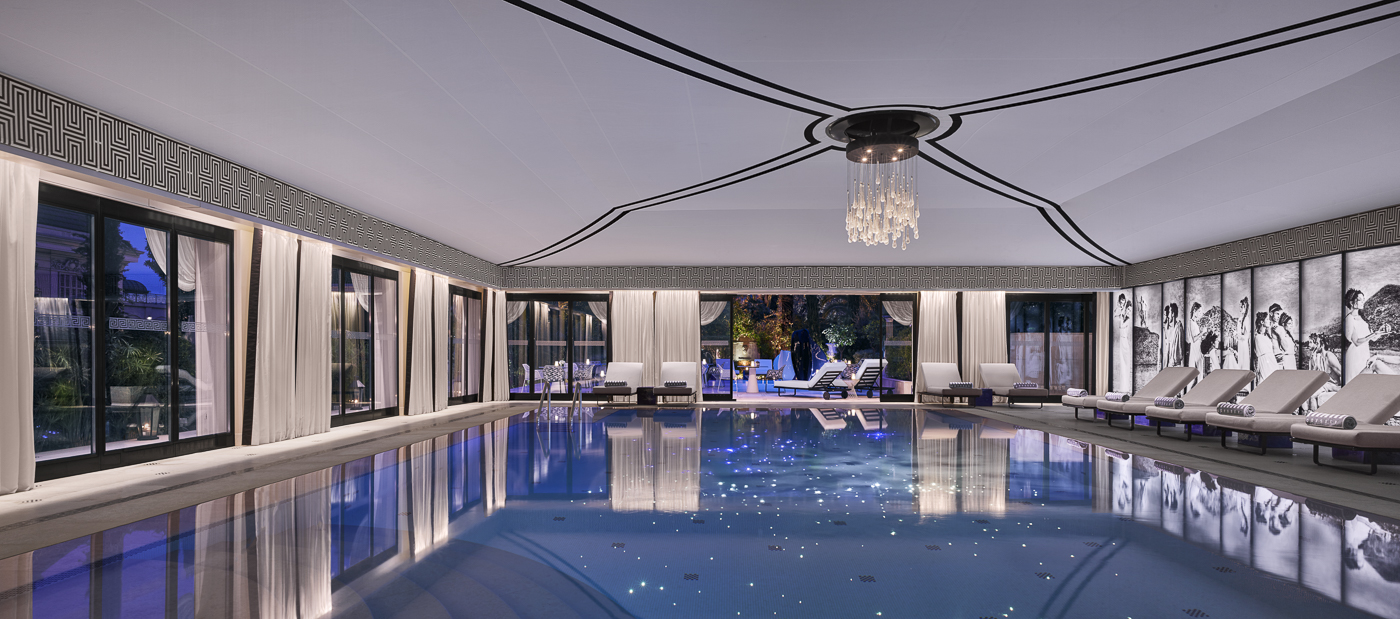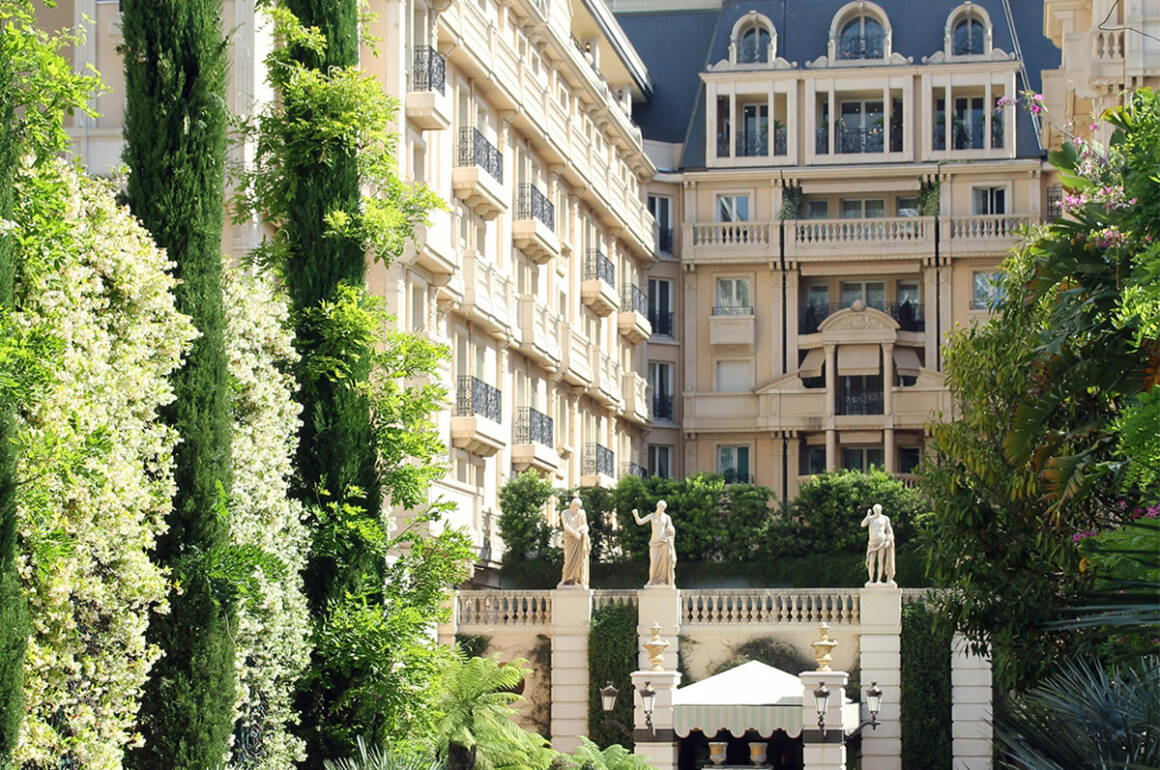
A view of the Hotel Metropole’s grand exterior
In the heart of Monaco is a grand yet intimate hotel that offers fantastic dining, a world-class indoor/outdoor pool, one of the best spas in Europe and a mystique that makes it even more than the sum of its parts. Darius Sanai checks in
The arrival at a great hotel is a key part of its story. The Metropole is situated on the Casino Square of Monte-Carlo, one of the most celebrated public destinations in the (luxury) world. And yet your arrival is refreshingly discreet. Your car turns into a driveway, lined with supercars, away from the public gaze. You are ushered into the lobby as if arriving at a grand private home. The lobby itself is a visual feast, but a discreet one: no overbright lights and high ceilinged grandeur, but a dramatic floral display, tapestries on the walls and intriguingly lit corners and a segue into a bar area to the right. This is a place for insiders – those who really know Monaco.

The hotel lobby’s floral displays change according to the season
Our room, a Prestige Suite, was lavish and contemporary, a hard act to get quite right. Chandeliers and rich drapes, pale furnishings and walls, blonde wood loungers, floor-to-ceiling windows. A place of light, comfort and silence in a town that can sometimes be very hectic.
Follow LUX on Instagram: luxthemagazine
The Metropole is famous for its food, and on the first evening we had a highly memorable meal, not at one of its celebrated restaurants but in the cosy heart of the bar, off the lobby. This is where Monaco residents go for casual dining. It’s comfort food, Monaco-style: a fabulous gazpacho, delicate artichoke with parmigiano, and a brilliant summation of Mediterranean cuisine: minestrone with monkfish, black beans and guianciale. Sublime yet simple.

The glamorous Hotel Metropole Bar was designed by architect and interior designer Jacques Garcia
The bar is a place to see friends as they swoosh back and forth to the lobby and the restaurants beyond: so we chose an excellent Pink Kiss, the house cocktail, gin-based, refreshing and balanced, to toast them.
The hotel recently opened its gastronomic restaurant, Les Ambassadeurs, by chef Christophe Cussac, who has overseen the food and beverage option at the hotel for almost two decades.
For LUX, though, the Metropole’s culinary piece de resistance is Yoshi, a small but exquisite Japanese restaurant situated in the courtyard, with a flower garden outside – a great indulgence considering the price of real estate here. The lacquered chicken – a delicious dish somewhere between teriyaki and yakitori – was memorable, the grilled black cod fleshy and fulsome with miso, and the miso soup refreshingly umami.

The Obento menu at the hotel’s Michelin Star restaurant Yoshi offers a light refreshing lunch option
Beyond the rooms and the cuisine is the spa, the hotel trying its hardest to ensure you never have to go anywhere in Monaco outside its domain. A wander down a corridor leads to a big terraced pool area, with views across town, a health food restaurant attached (with requisite, impossibly perfect men and women perched at the bar). The service at the pool is magnificent, intuitive and thorough without being overbearing. The pool miraculously turns into an indoor pool in winter, the walls of its pavilion swathed in Karl Lagerfeld frescoes.
Read more: Badrutt’s Palace St Moritz, Review
Just downstairs from the pool, we were wafted into the transformational world of the Bastien Gonzalez ‘Pedi:Mani:Cure’. If you ever wondered why women in Monaco have hands that look 20 years younger than they are, you now know the answer, although seeing a teenage girl emerging from the spa after us did beg the question of whether her hands disappeared altogether into a pre-natal state.

Designed by Karl Lagerfield, the ODYSSEY installation and heated pool is covered throughout the winter and al fresco during the rest of the year
But we digress. More than the magnificent hardware, any memory of the Metropole is dictated by the even more magnificent service. Not a given, even in this part of the world, it gives this uber-chic grand hotel in one of the world’s most iconic destinations the feel of a fantastic, extensive private home – albeit one with some of the world’s best chefs cooking for you, and a butler who can rustle up a fantastic club sandwich and cocktail if you just feel like chilling with your house guests in the drawing room. The Metropole is an absolute LUX favourite.
Find out more: metropole.com











Recent Comments